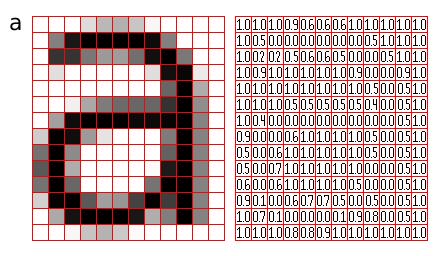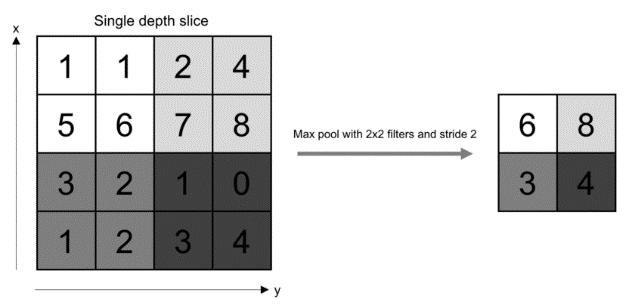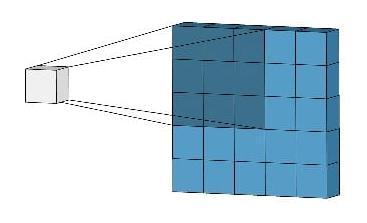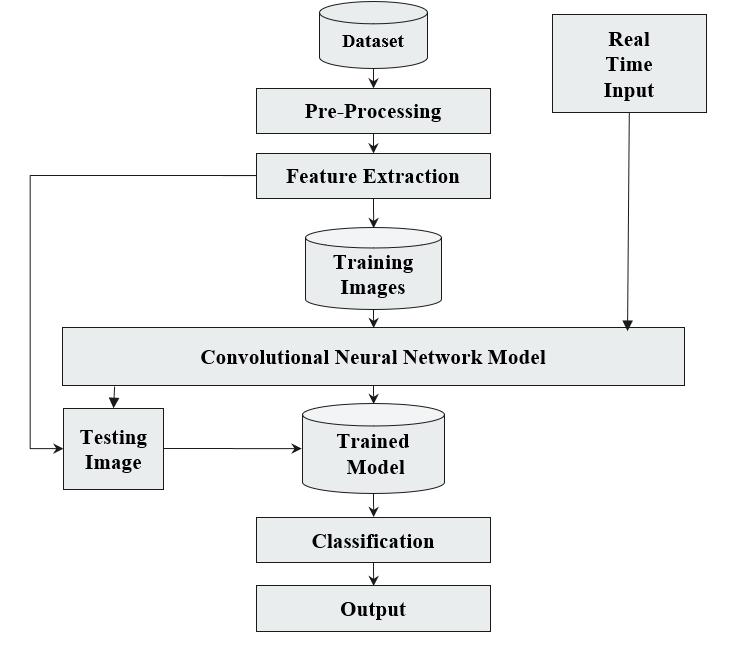Devanagari Digit and Character Recognition Using Convolutional Neural Network
Suresh Mestry 1 , Bhagyasha Patil2 , Anushka Pede3 , Shreya Raul41 Assistant Professor, Department of Computer Engineering, MCT’s Rajiv Gandhi Institute of Technology, Maharashtra, India

2 Student, Department of Computer Engineering, MCT’s Rajiv Gandhi Institute of Technology, Maharashtra, India
3 Student, Department of Computer Engineering, MCT’s Rajiv Gandhi Institute of Technology, Maharashtra, India
4 Student, Department of Computer Engineering, MCT’s Rajiv Gandhi Institute of Technology, Maharashtra, India ***
Abstract - In recent decades, ConvolutionalNeuralNetwork (CNN) has achieved remarkable results in both the research field and the application field due to the significant achievement acquired in image recognition which is abundantly used in the field of machine learning. Handwriting recognition is the bridge between handwriting and machines, and can play a huge role in finance, accounting, educationand other fields reducing labor cost. At present, the recognition of handwriting has received great degreeofattentionfrommany researchers. Handwritten digit and character recognition becomes vital scope and it is appealing many researchers because of it’s using in variety of machine learning and computer vision applications. However, due to its complexity handwritten digit and character recognition still has a great development space. The recognition of handwritten digits and character remains a difficult problem, particularly in some scripts, there exists a large variation of style across writers. This large variation is an interesting challenge for algorithms in image processing and pattern recognition. There are deficient works accomplished on Devanagari scripts because Devanagari scripts are more challenging than English. The proposed system evaluates handwrittenDevanagaricharacter and digit recognition. CNN model is used to determine the result to achieve character and digit recognition. This system will be implemented using Python and its different library functions.
Key Words: CNN, Handwritten, Machine Learning, Devanagari.
1. INTRODUCTION
Overtheperiodoftimethenumbersoffieldsinwhichdeep learning is applied is increasing. In deep learning, visual imagery analysis uses Convolutional Neural Networking (CNN). Object detection, video analysis, segmentation, pattern recognition, face recognition, natural language processing,spamdetection,topiccategorization,regression analysis,speechrecognition,imageclassificationaresomeof theexamplesthatcanbedoneusingConvolutionalNeural Networks. The accuracies in various such fields including handwritten digits recognition using Deep Convolutional Neural Networks has reached human level perfection.
DevanagariscriptisbasedontheancientBramhiscriptused in the Indian subcontinent. Devanagari Script consists 47 primarycharactersincluding14vowelsand33consonants. Handwritten character and digit recognition refers to the automatic identification of handwritten alphabets and numbersthroughcomputersorotherequipment.
2. OBJECTIVES
ToovercomethedifficultyinrecognitionofDevanagari digitandcharactersduetovariationinwritingpatters; usingConvolutionalNeuralNetwork.
Perform an efficient pre-processing to make data suitableforanalysis.
CreateaCNNmodeltoperformclassificationprocess bytrainingthemodelwithtrainingdatatofitandtest themodeltoevaluatetheaccuracyrate.
3. PROPOSED SYSTEM
We intend to develop a system where the application recognizesDevanagaridigitsandcharactersbasedonCNN. In the recognition of handwritten characters and digits particularly in the Devanagari script; there exists a larger variation of style across writers which is an interesting challengeinimagepre-processingandrecognition.
4. METHODOLOGY
A Convolutional Neural Network, which is also known as CNN or ConvNet, is a class of neural networks that specializesinprocessingdatawhichhasagrid-liketopology, suchasanimage.Adigitalimageisabinaryrepresentation ofvisualdatawhichcontainsaseriesofpixelsarrangedina grid-like fashion that contains pixel values to denote the brightnessofthepixelandwhatcoloreachpixelshouldbe.
LayerhelpsaNeuralNetwork(NN)togaincomplexityinany problem. Increasing number of layers (with units) can increasethenon-linearityoftheoutputofanNN.Eachlayer containssomeamountsofUnits.Theamountisentirelyup tothecreator.However,havingtoomanylayersforasimple taskcanunnecessarilyincreaseitscomplexityanddecrease itsaccuracy.Theoppositealsoholdstrue.EveryNNhas2 layers. Those are the input and output layers. Layers in between those are called hidden layers. The NN in the picture below contains an input layer (with 8 units), an output layer (with 4 units) and 3 hidden layers with each containing9units.
ThecorebuildingblockoftheCNNisconvolutionlayer.It carriesthemainpartofthenetwork’scomputationalload.It performsadotproductbetweentwomatrices,wherefirst matrixisthesetoflearnableparametersknownasakernel, and the second matrix is the restricted portion of the receptivefield.Thekernelissmallerthananimagebuthas larger depth. Which means, the height and width of the kernelwillbespatiallysmall,butthedepthwillextendupto all the three channels if the image is composed of three (RGB)channels.Duringtheforwardpass,thekernelslides acrosstheheightandwidthoftheimagewhichproducesthe imagerepresentationofthatreceptiveregion.Thisproduces a two-dimensional representation of the image which is knownasanactivationmapwhichgivestheresponseofthe kernelateachspatialpositionoftheimage.

Aneural network with2or morehiddenlayerswith each layer containing a large amount of units is called a Deep NeuralNetwork.

ACNNtypicallyhasthreelayers:
Convolutionallayer
Poolinglayer
Fullyconnectedlayer.
The pooling layer is used to replace the output of the networkatcertainlocationsbyderivingabriefstatisticof thenearbyoutputs.Ithelpsinreducingthespatialsizeofthe representation, decreasing the required amount of computation and weights. The pooling operation is individually processed on each and every slice of the representation.Therearevariouspoolingfunctionssuchas theaverageoftherectangleneighborhood,L2normofthe rectangularneighborhoodandweightedaveragebasedon thedistancefromthecentralpixel.Maxpoolingreportsthe maximum output from the neighborhood and is the most popularprocess.



Neuronsinthislayerarefullyconnectedwithallneuronsin theprecedingandsucceedinglayerasseeninregularFCNN. Thisiswhyitcan becomputed bya matrixmultiplication followedbyabiaseffect.TheFClayerassistinmappingthe representationbetweentheinputandtheoutput.

Figure below gives the system architecture of proposed system.Totrainthemodelfirstthedatasetispre-processed. After pre-processing feature extraction is done for the datasetfromwhichwegettrainingimages.Thesetraining imagesarepassedtotheCNNmodelwhichfurthergivesusa trained model. On the basis of this trained model classificationisdoneandoutputisgenerated.Whiletesting the model first the dataset is pre-processed. After preprocessing feature extraction is done for the dataset from whichwegettestingimage.Thistestingimageispassedon totrainedmodelandusingCNNmodelclassificationisdone forthetestingimageandfurtheroutputisgenerated.Now whenwegiveareal-timeinput,thisinputispassedtothe CNNmodelandusingthetrainedmodelinputisclassified andanappropriateoutputisgenerated.


6. EXPERIMENTAL RESULT

OurKaggledatasetconsistsofmultipleimagesofDevanagari digitsandcharacters.ThisdatasetisusedtotrainourCNN model.Themodeltrainedwiththisdatasetisusedtopredict theoutputorwecansayrecognizetheuserinput.Theuser inputisgivenasdrawingthedigitorcharacterthataretobe recognizedwiththehelpofcursoronthewhiteboardwhich appears on the user interface. In total there are 92,000 images of Devanagari digits and characters. There are 10 digits from 0 to 9 and 36 characters from Ka to Nya each having2000imagesrespectively.

The above few images are from the dataset of Devanagari character Ka and Devanagari digit 2 displaying variety in handwrittenpatterns.Thefollowingimagesrepresentshow userinputistobegivenonthewhiteboardwindowusing thecursor.
7. CONCLUSIONS
OurmodelisbasedonmultilevelclassificationusingCNNis usefulinrecognizingDevanagaridigitandcharacterswritten in various styles. Using the classification obtained, researchers can efficiently study the ancient Indian literature.



ACKNOWLEDGEMENT
This system is implemented under the guidance of Prof. Suresh Mestry, Department of Computer Engineering at MCT’SRajivGandhiInstituteofTechnology,Mumbai,India.
REFERENCES
[1] Burel, G., Pottier, I., &Catros, J. Y. (1992, June). Recognitionofhandwrittendigitsbyimageprocessing andneuralnetwork.InNeuralNetworks,1992.IJCNN, InternationalJointConferenceon(Vol.3,pp.666-671) IEEE.
[2] Niu,X.X.;Suen,C.Y.AnovelhybridCNN–SVMclassifier for recognizing handwritten digits. Pattern Recognit. 2012,45,1318–1325.
[3] Wells,Lee&Chen, Shengfeng&Almamlook,Rabia&Gu, Yuwen.(2018).OfflineHandwrittenDigitsRecognition UsingMachinelearning.
[4] Y.LeCun,B.Boser,J.Denker,D.Henderson,R.Howard, W. Hubbard, and L. Jackel, "Handwritten digit recognition with a back-propagation network," in Advances in Neural lnformation Processing Systems (NIPS)2,1990,pp.396-404.
[5] D. Ghosh, T. Dube, and A. Shivaprasad, "Script recognition:Areview,"IEEETrans.PatternAnalysisand MachineIntelligence,vol.32,no.12,pp.2142-2161,Dec. 2010.
[6] Y.LeCunetal.,"Backpropagationappliedtohandwritten zipcoderecognition,"Neuralcomputation,vol.1,no.4, pp.541-551,1989.
[7] L. Bottou, “Notes on convolutional neural networks”, 2006.
[8] Sueiras, J.; Ruiz, V.; Sanchez, A.; Velez, J.F. Offline continuoushandwritingrecognitionusingsequenceto sequenceneuralnetworks.Neurocomputing.2018,289, 119-128.
[9] HubertCecotti,“HandwrittenDigitRecognitionofIndian Scripts”,IEEE,2015

[10] JinzeLi,GongboSun,LeiveYi,QianCao,FusenLiang,Yu Sun, “Handwritten Digit Recognition System based on ConvolutionalNeuralNetwork”,IEEE,2020
[11] Mayank Jain, Gagandeep Kaur, Muhammad Parvez Quamar,HarshitGupta,“HandwrittenDigitRecognition usingCNN”,IEEE,2021
